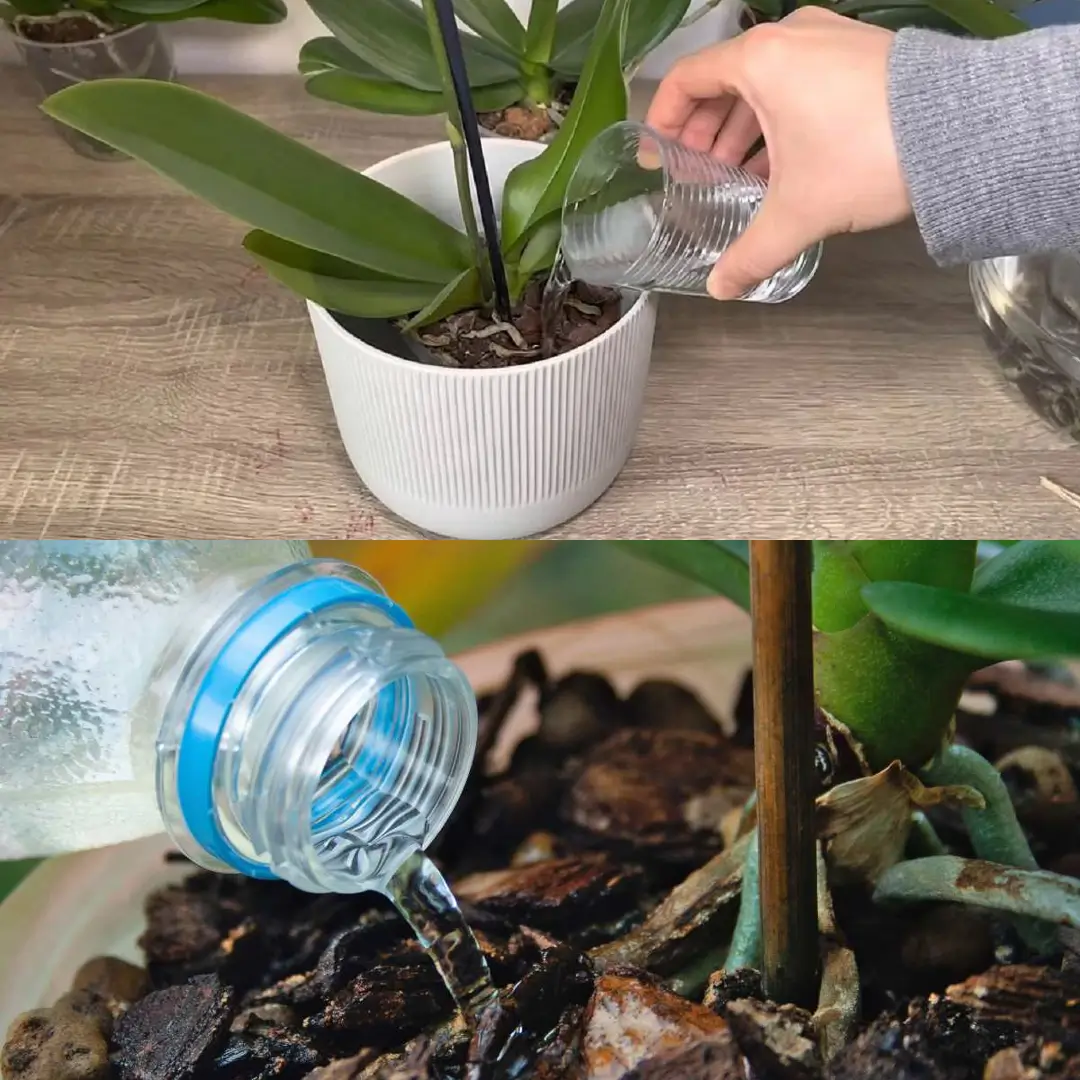Orchids are stunning plants that thrive when given the right care, and water orchids the correct way is crucial to their health. Watering them properly can make the difference between vibrant, long-lasting blooms and a wilting, stressed plant. Many people feel confused or overwhelmed when trying to figure out how to water orchids, and if that’s you, don’t worry—you’re not alone! This guide is packed with everything you need to master watering orchids, with practical tips, common mistakes to avoid, and ways to keep your orchids thriving throughout the seasons.
Let’s dive into the world of orchid watering, so you can enjoy their gorgeous blooms for years to come.
Why Watering Orchids Properly Matters
Orchids have a bit of a reputation for being finicky. They thrive on a delicate balance of light, temperature, humidity, and—of course—water. While these plants can be forgiving in many ways, incorrect watering can spell disaster. Overwatering, in particular, is a common cause of orchid death. But don’t worry; with the right technique, knowing how to water orchids can become second nature.
Understanding Orchid Watering Needs
Orchids are tropical plants by nature, so they prefer conditions that mimic their natural environment: warm, humid, and well-drained. One key factor that sets orchids apart from other houseplants is their root system. Orchid roots are designed to absorb moisture quickly and then dry out. This is why it’s crucial to avoid soggy roots. Ready to learn more? Let’s get into the specifics!
How Often Should You Water Orchids?
Weekly Watering Routine
For most orchid species, watering once a week is the sweet spot. Rather than simply pouring water into the pot, the best approach is to give your orchid a weekly plunge into room-temperature water. Submerge the entire pot in water for a few minutes, allowing the roots to soak up moisture. Then, let the excess water drain through the holes in the bottom of the pot. This method mimics how orchids receive rainwater in the wild—plenty of hydration, followed by a thorough drying period.
Why does this work so well? Orchids hate “wet feet.” Their roots need to breathe, and letting water sit in the pot can suffocate them, leading to root rot. The draining process ensures the roots have access to oxygen, while still getting the moisture they need.
Checking Orchid Roots: Your Watering Guide
How can you tell if your orchid needs more or less water? Just take a peek at its roots! Healthy, well-watered roots will appear green. If they turn brown and mushy, your orchid is getting too much water, and root rot might be on the horizon. On the other hand, grayish-white roots indicate the plant is thirsty and needs more water. A good rule of thumb? When in doubt, it’s better to underwater than overwater an orchid.
Have you ever noticed those air roots that pop out of the pot? They’re a sign that your orchid is growing happily and actively searching for more moisture from the air.
Adjusting Watering for the Seasons
Hot Weather: Increase Frequency
When the summer heat kicks in, your orchid will need more hydration. In hot weather, water your orchid every three days instead of once a week. The increase in temperature will cause the plant to lose moisture faster, so you’ll need to compensate by upping the watering schedule. Be sure to still follow the plunge-and-drain method, but simply do it more frequently.
Winter: Decrease Watering Frequency
In the winter months, orchids enter a semi-dormant phase. They don’t need as much water during this time because the cooler temperatures slow down their growth. You can reduce watering to once every two to three weeks in winter. However, make sure the plant is still in a humid environment, as dry air from indoor heating can cause the orchid to dehydrate.
The Ice Cube Watering Method
If you’re looking for a no-fuss way to water your orchid, the ice cube method could be the answer. This approach involves placing three ice cubes on top of the orchid’s soil and letting them melt slowly. This provides a steady, gentle supply of water without overwhelming the roots.
Research from Ohio State University supports this method, showing that it doesn’t harm the orchid, and it allows you to control the amount of water you’re giving your plant. Worried about the cold damaging your tropical beauty? Don’t be! The ice melts at a slow enough rate that it won’t shock the plant’s roots.
This method is perfect if you’re prone to overwatering or if you just want an easy way to keep your orchid hydrated without much fuss.
Maintaining Humidity: Key for Orchid Health
Orchids come from tropical rainforests where humidity levels are high. To keep your orchid happy, you’ll need to replicate this environment as much as possible. One way to do this is by misting your orchid regularly. A daily misting will keep the leaves and air roots moist without soaking the soil.
Another option, and often a more effective one, is to place your orchid pot on a tray of gravel and water. The water in the tray will evaporate, increasing the humidity around the plant without making the roots sit in water. This setup mimics the humid, airy environment that orchids love.
Common Mistakes to Avoid When Watering Orchids
Even experienced orchid owners can make mistakes when it comes to watering. Here are two common pitfalls to avoid:
Overwatering: A Silent Orchid Killer
More orchids die from overwatering than from any other cause, making it essential to know how to water orchids correctly. Orchids prefer a dry environment between waterings, so letting them sit in soggy soil is a big no-no. Always ensure that the pot has proper drainage and that the roots have had a chance to dry out before the next watering session. If you notice brown, mushy roots, that’s a telltale sign that you’re giving your orchid too much water. By following these guidelines, you can help your orchids thrive and avoid the common pitfalls of improper watering.
Watering at Night: A Recipe for Root Rot
Watering orchids at night can lead to serious issues like bacterial and fungal infections. Why? Because water that sits on the plant overnight doesn’t have a chance to evaporate, creating a breeding ground for disease. Always water your orchid in the morning to allow the plant to dry out during the day.
How to Tell If Your Orchid Needs Water
So, how can you tell if it’s time to water your orchid? Here’s a quick checklist:
- Root color: Green roots mean your orchid is well-watered. Grayish-white roots? Time to water.
- Weight of the pot: A light pot usually means the orchid is dry and needs water. A heavier pot means the roots still have moisture.
- Leaves: Wrinkled or limp leaves can indicate your orchid is thirsty. Firm, smooth leaves suggest it’s getting enough water.
How to Choose the Right Pot for Watering Orchids
Believe it or not, the pot you choose plays a significant role in your orchid’s watering routine. The best pots for orchids are those that provide excellent drainage. Clear plastic pots with drainage holes are ideal because they allow you to see the roots and ensure water is draining properly. Terracotta pots can also work, but be sure they have ample drainage at the bottom.
Mastering Orchid Watering for Long-Lasting Blooms
Watering orchids might seem daunting at first, but once you understand their unique needs, it’s a breeze. Remember to stick to a weekly watering routine using the plunge method to ensure your orchids get the moisture they require. Be sure to adjust your watering schedule for seasonal changes, as orchids might need more frequent watering during hot weather. Additionally, consider using the ice cube method for easy and controlled watering. Most importantly, keep an eye on the roots to gauge how well your orchid is doing; healthy roots will guide you in how to water orchids effectively.
By mastering how to water orchids correctly, you’ll be rewarded with beautiful blooms year after year. Happy watering!
FAQs:
1. What is the best way to water an orchid?
The best way to water orchids is by using the soak-and-drain method. This technique involves submerging the orchid pot in room-temperature water for a few minutes, giving the roots time to absorb the moisture they need. Afterward, it’s important to let the excess water drain thoroughly through the holes in the pot. This method prevents the roots from sitting in standing water, which could lead to root rot—a common issue when you don’t water orchids correctly. By using this approach, you ensure your orchid stays healthy and vibrant.
2. Is it better to mist or water orchids?
While misting helps maintain humidity around orchids, it’s not a substitute for proper watering. Watering your orchid using the soak-and-drain method ensures that the roots get the deep hydration they need. Misting is better for keeping the environment humid but shouldn’t be the sole source of water.
3. Can you use ice cubes to water orchids?
Yes, you can use ice cubes to water orchids. The ice cube method involves placing three ice cubes on the soil surface and letting them melt slowly. This ensures a controlled release of water, reducing the risk of overwatering. It’s a simple and effective method, especially for beginners, but should be done carefully to avoid shocking the plant.
4. Do orchids need direct sunlight?
No, orchids do not thrive in direct sunlight. They prefer indirect, bright light, such as the soft light that filters through sheer curtains. Direct sunlight can scorch their delicate leaves and damage the plant, making it essential to be mindful of where you place your orchid. When you water orchids properly and give them the right lighting, they’ll flourish. Make sure your orchid is positioned in a spot where it receives bright but indirect light to get the best possible blooms without the risk of sunburn.


